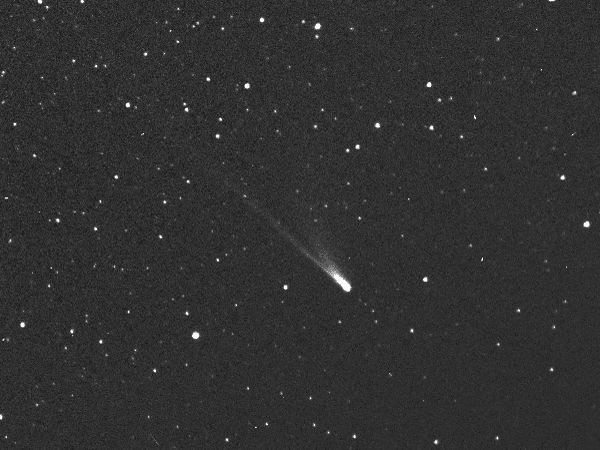The comet 96P/Machholz 1, measuring 3.7 miles wide, is believed to have originated from beyond our solar system and is currently being tracked by the NASA-European Space Agency’s Solar and Heliospheric Observatory spacecraft. This comet is on its way towards the sun within the orbit of Mercury, leaving a trail of ice behind it as it moves.
As comets near the sun, the gas in their tails, along with frozen clumps of ice and gas, is heated by solar radiation and slowly trickles out. In 2008, a study of 150 comets showed that 96P/Machholz 1 contained low levels of cyanogen and carbon, leading astronomers to believe it could have come from another solar system. Now, as it makes its descent towards the sun, it may reveal even more secrets about its origin and composition.
The atypical comet 96P has been capturing the attention of scientists and researchers, who are eager to uncover its secrets. As Karl Battams, an astrophysicist at the Naval Research Lab in Washington DC, stated, “96P is a very unusual comet, both in its composition and behavior, so we never know what to expect. Hopefully, we can gain valuable insights and share them with the world as soon as possible.”
The comet was first discovered by amateur astronomer David Machholz in 1986 using a cardboard telescope he had built himself. Unlike most comets that fall towards the sun and are typically smaller than 32 feet, Machholz 1, towering over two-thirds the height of Mount Everest, is large enough to avoid complete evaporation. In fact, the NASA-European Space Agency’s Solar and Heliospheric Observatory has recorded the comet making five close passes around the sun since its discovery, including its closest approach on January 31st, when it was three times closer to the sun than Mercury.
The unusual orbit of 96P/Machholz 1, the comet monitored by the NASA-European Space Agency (ESA) Solar and Heliospheric Observatory (SOHO), has experts puzzled. It is believed that the comet could be an interloper from another solar system that was ejected by the gravity of a giant planet. Alternatively, it could have formed in uncharted regions of our solar system or had its chemical composition altered due to repeated exposure to the sun.
SOHO has tracked over 3,000 comets since its launch in December 1995. While its primary purpose is to observe solar activity, such as coronal mass ejections and solar flares that can cause geomagnetic storms on Earth, the detection of Machholz 1 has added to its scientific achievements. The storms resulting from solar flares can have far-reaching effects, from destabilizing satellites to potentially disrupting the internet.


















